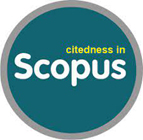Copyright vs. Patent: Exploring Intellectual Property Protection Boundaries for Software
Abstract
This article examines the legal protection boundaries of software within the intellectual property system, particularly focusing on the ambiguity between copyright and patent regimes. The main issue addressed is whether software with technical functions should be protected solely through patents or whether copyright is sufficient, considering the dual nature of software as both an expressive work and a technological tool. Using a normative legal approach, this study analyzes the national legal framework and compares it with other jurisdictions. The research findings indicate that dual protection without clear boundaries may lead to legal uncertainty, especially for software industry players who require clarity regarding their exclusive rights. Therefore, a more assertive and harmonized legal policy formulation is needed to ensure optimal protection of software in both its creative and functional aspects.
Keywords
Full Text:
PDFReferences
Alam, D. (2019). Intellectual Property Law: Oracle vs. Google. DePaul Journal of Art, Technology DePaul Journal of Art, Technology & Intellectual Property Law, 26(1).
Atsar, A. (2018). Perlindungan Hukum Terhadap Invensi di Bidang Teknologi Informasi dan Komunikasi. Mitra Wacana Media.
Aulia, S., Sabrina, S. L., Nurfadilah, T., & Putra, U. N. (2024). Perlindungan Hukum Terhadap Karya Derivatif Sebagai Implementasi Hak Cipta di Indonesia. Jurnal Hukum Dan HAM Wara Sains, 03(01), 113–120.
Jedrusik, A. (2017). Patent protection for software-implemented inventions. WIPO Magazine.
Marzuki, P. M. (2009). Penelitian Hukum. Kencana Prenada Media Group.
Nashara, A. C. (2011). Perlindungan Program software komputer di indonesia. Seminar Nasional Teknologi Informasi & Komunikasi Terapan, 1–19.
Nucahyanti, Y., Muhandhis, I., & Novia, Y. (2023). Implikasi Perlindungan Paten Dan Hak Cipta Terhadap Software Di Indonesia Dan Negara Maju. Jurnal Penelitian Dosen FIKOM (UNDA), 5(1), 1–9.
Plotkin, R. (2005). Software patentability and practical utility: What’s the use? International Review of Law, Computers & Technology, 19(1), 23–36. https://doi.org/https://doi.org/10.1080/13600860500051283
Prasetyo, A. E., & Nugroho, H. (2021). Perlindungan Hukum terhadap Program Komputer dalam Perspektif Hak Cipta dan Paten. Jurnal Hukum Dan Pembangunan Ekonomi, 9(2), 105–117.
Pressman, R. S., & Maxim, B. R. (2014). Software engineering: A practitioner’s approach (8th ed.) (8th ed.). McGraw-Hill Education.
Sherman, B. (2018). Intangible machines: Patent protection for software in the United States. History of Science, 57(1), 18–37. https://doi.org/https://doi.org/10.1177/0073275318770781
Soejono. (2003). Metode Penelitian Hukum - Cetakan ke-II. Penerbit Rineka Cipta.
Sommerville, I. (2016). Software Engineering, 10th edition. Pearson Education Limited.
Tilt, D. (2023). International Perspectives on Regulatory Frameworks: AI Through the Lens of Patent Law. In Law, Governance and Technology Series (Vol. 59). Springer, Cham. https://doi.org/10.1007/978-3-031-41081-9_10
Undang-Undang Nomor 28 Tahun 2014 Tentang Hak Cipta, Pub. L. No. 28 (2014).
Undang-Undang Nomor 65 Tahun 2024 Tentang Perubahan Ketiga Atas Undang-Undang Nomor 13 Tahun 2016 Tentang Paten, Pub. L. No. 65, 1 (2024).
Vaitkunaite, I., Beniušis, M., & Jurčys, P. (2021). The lawsuit of the decade - Google LLC v. Oracle America, Inc.: A victory for interoperability and the future of innovation. Journal of Intellectual Property Law and Practice, 16(6), 463–465. https://doi.org/10.1093/jiplp/jpab089
WIPO. (2020). Software and Copyright. World Intellectual Property Organization.
DOI: http://dx.doi.org/10.58836/jpma.v16i1.25412
Refbacks
- There are currently no refbacks.

This work is licensed under a Creative Commons Attribution-NonCommercial 4.0 International License.
 |  |  |  |  |  |  |
Jurnal Penelitian Medan Agama
This work is licensed under a Creative Commons Attribution-NonCommercial 4.0 International License.











